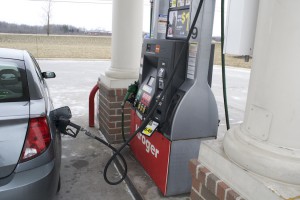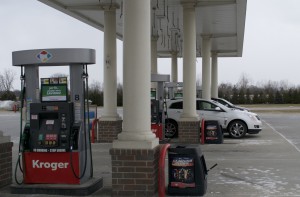
Demand is dropping as winter sets in and fuel prices are beginning to fall in time for the holidays.
As motorists prepare for trips during the Christmas holidays, they will find the price of gasoline has declined this week but overall prices have increased by 20 cents per gallon compared with last year despite record oil production in the U.S. this year.
AAA reported the national average dropped three cents to $2.43 this week. Motorists in the Midwest are seeing the largest drops at the pump, by as much as 10 cents. However, two states are paying more on the week: Indiana where prices are up by 3 cents and Hawaii where prices have climbed by a cent.
The national gas price average is 12 cents cheaper than one month ago, but that’s not the case compared to this time last year.
“More than 97 million Americans will begin to hit the road this week for the holidays – the most ever on record,” said Jeanette Casselano, AAA spokesperson.
(Holiday travelers expected to set another record this year. To find out how, Click Here.)
“At 20 cents more per gallon than the same time last year, pump prices don’t seem to be a deterrent for today’s travelers. The good news is that in most states, gas prices are 12 cents less than they were a month ago. So today, motorists can find gas for $2.50 or less at 71% of gas stations in the country,” she said.

Gas prices fall as demand drops and production is on the rise, providing holiday travelers with a nice gift.
The federal Energy Information Administration said weekly gasoline inventories increased by 5.7 million barrels, while holding above the 9 million-barrel mark, which is in line with this time last year.
“The increase in supply combined with weaker winter demand will pave the way for even cheaper winter gas prices,” Casselano predicted.
The states with largest yearly changes are in Alaska where prices have increased 54 cents per gallon, California, 43 cents: Montana, 42 cents; Oregon, 38 cents; North Dakota, 36 cents; Colorado, 35 cents; Hawaii, Wyoming, Washington where prices are up 34 cents and Idaho, 33 cents.
(Click Here to find out why premium gasoline is overrated.)
The top 10 states with the least expensive gasoline are include Missouri, $2.16 per gallon, South Carolina, Alabama, Oklahoma, Mississippi and Texas where prices are averaging $2.18 per gallon, Arkansas, $2.19, Tennessee, $2.22, Louisiana, $2.23 and Virginia, $2.24, according to figures companies.
Meanwhile, the EIA’s Weekly Petroleum Status Report measures refinery crude processing at 17.1 million barrels for the week ending Dec. 15. Rates above 17 million barrels per day are common during the summer months, in light of high demand.
But the high average is unusual this time of year because demand is typically lower. However, the latest demand measurement – 9.4 million barrels per day – is the highest December demand number seen since December 2014, AAA’s analysts noted.
EIA’s latest report showed that domestic crude oil production hit a new record high at 9.8 million barrels per day, which has not been that high since December 1970.
(The 15 hottest new cars, trucks and crossovers for 2018. Click Here to check them out.)
OPEC has now agreed to extend crude oil cuts through the end of 2018 but efforts by the U.S. and other producers outside of the OPEC agreement came into sharper focus because they have gained market share due to reduced output levels from other global suppliers.
